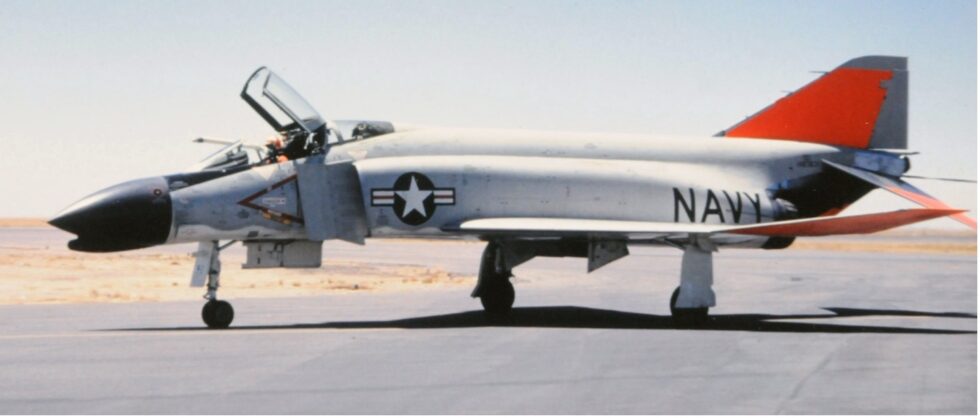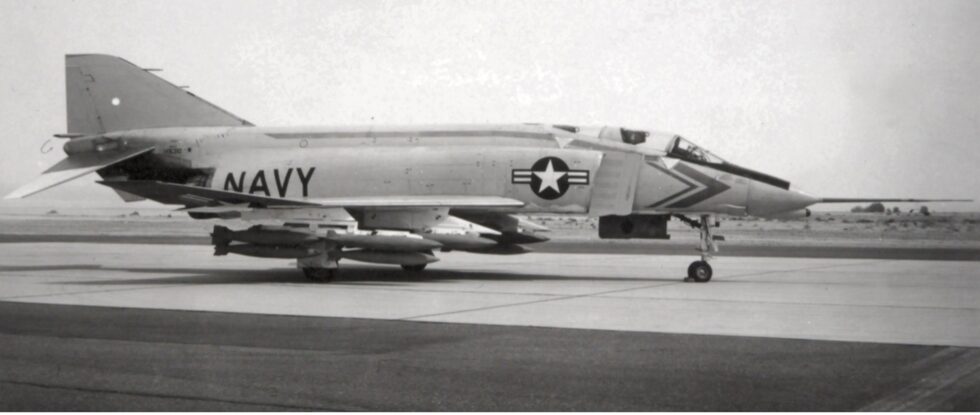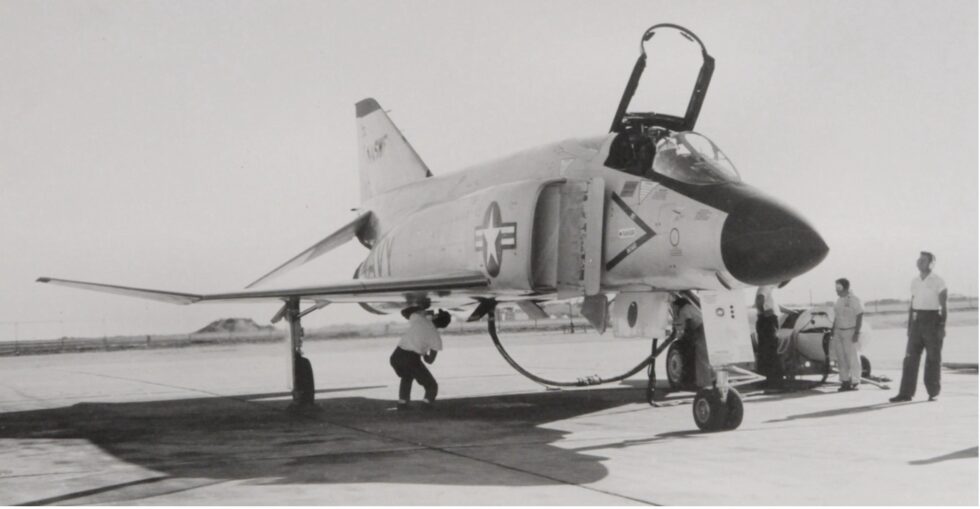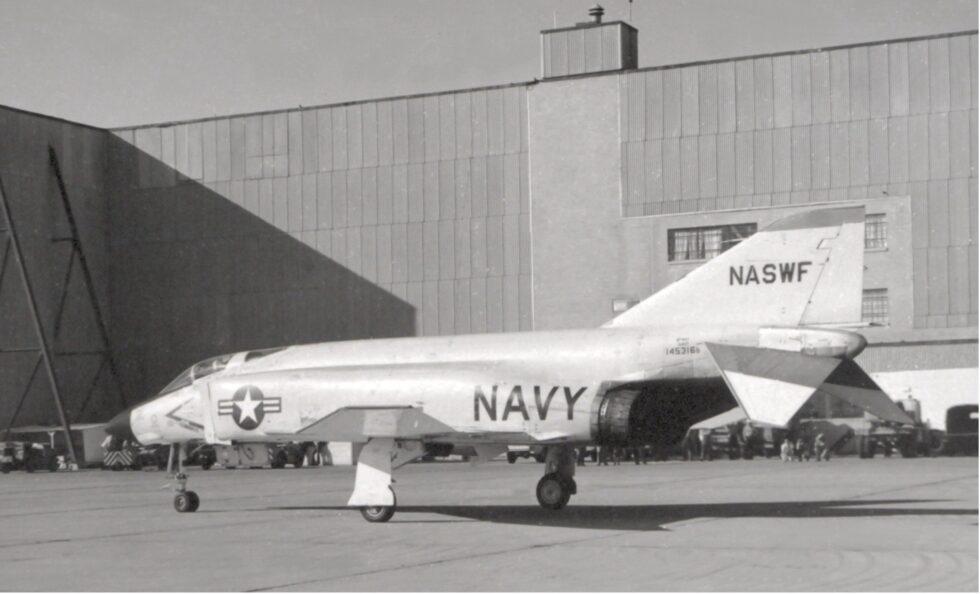USN NASWF McDonnell Aircraft F-4 Phantom II
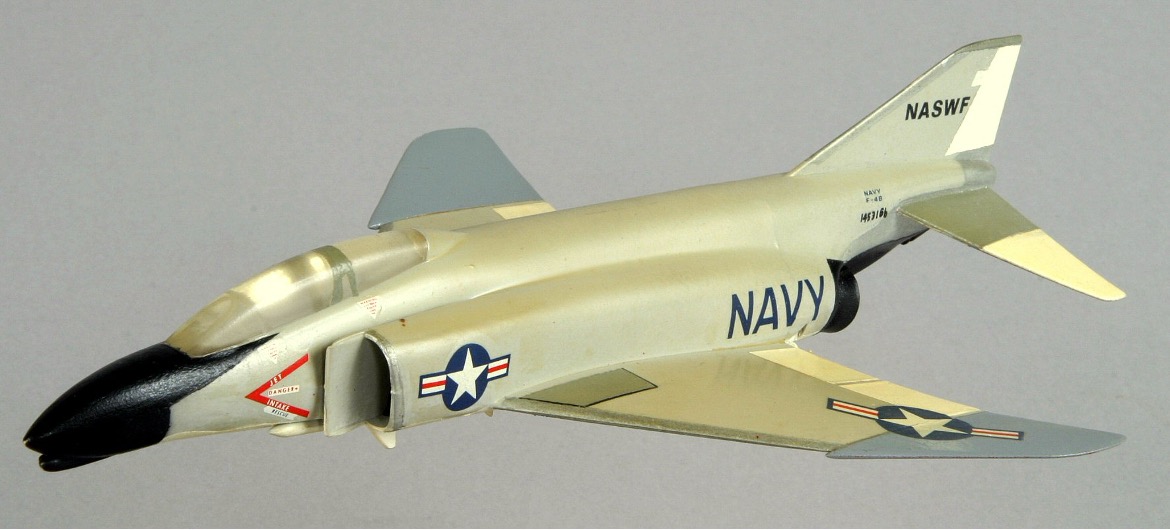
N. Melvin
1/48
11/23/1965
historical significance
First Albuquerque Visit: 1960
Additional Information:
The McDonnell Douglas F-4 Phantom II is an American tandem two-seat, twin-engine, all-weather, long-range supersonic jet interceptor and fighter-bomber originally developed by McDonnell Aircraft for the United States Navy. Proving highly adaptable, it entered service with the Navy in 1961. The F-4 Phantom production ran from 1958 to 1981 and a total of 5,195 aircraft were built becoming the most produced American supersonic military aircraft in history.
The F-4 Phantom was a large fighter with a top speed of over Mach 2.2. It can carry more than 18,000 pounds of weapons on nine external points, including air-to-air missiles, air-to-ground missiles, and various bombs.
The F-4 Phantom was used extensively during the Vietnam War and it served as the principal air superiority fighter for the U.S. Air Force, Navy, and Marine Corps and became important in the ground-attack and aerial reconnaissance roles late in the war. The F-4 Phantom continued to form a major part of U.S. military air power throughout the 1970s and 1980s. The F-4 Phantom was also the only aircraft used by both the Air Force Thunderbirds and the Navy Blue Angels flight demonstration teams.
Albuquerque’s Kirtland Field was designated Kirtland Air Force Base in 1947, and the Armed Forces Special Weapons Project (AFSWP) operated on Sandia Base. When the United States Air Force established the Air Force Special Weapons Command at Kirtland Air Force Base in 1949, the United States Navy formed a detachment to investigate nuclear capabilities for naval aircraft and assist the AFSWP with naval equipment for demonstrations and training. The Naval Weapons Evaluation Facility (NWEF) operated through the Cold War investigating aircraft-weapon interfaces to provide United States Navy aircraft with nuclear weapons delivery capability.
In 1952 this detachment was designated the Naval Air Special Weapons Facility (NASWF) to conduct special weapons tests on the White Sands Missile Range and Tonopah Test Range in coordination with the United States Atomic Energy Commission. In March of 1961, the NASWF was re-designated the Naval Weapons Evaluation Facility (NWEF) and its mission was expanded to include safety studies on nuclear weapons. The aircraft used for NWEF testing were decorated with the NWEF thunderbird symbol and the NWEF detachment became known as the Rio Grande Navy by its sailors and civilians.
In 1992, with the consolidation of many naval activities and the drawdown of the U.S. defense budget, NWEF became part of the large, multisite Naval Air Warfare Center Weapons Division in China Lake. In 1993 the NWEF was decommissioned and became the first nuclear-weapons-related facility in the Free World to be shut down. As NWEF closed, it transferred some of its remaining people and functions to the China Lake site.
The McDonnell Douglas F-4 Phantom II, Bu No. 148363, received its special weapons suitability tests at the Naval Air Special Weapons Facility (NASWF) at Kirtland Air Force Base in Albuquerque, New Mexico beginning in 1960.
Photos show several Phantoms that were tested at Kirtland AFB in the 1960’s.

